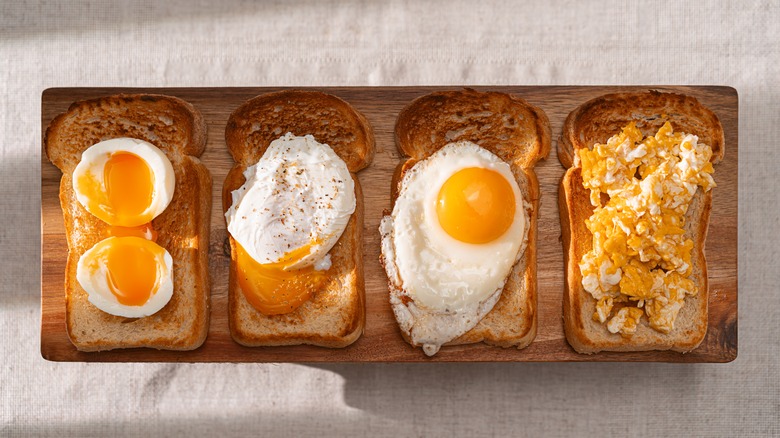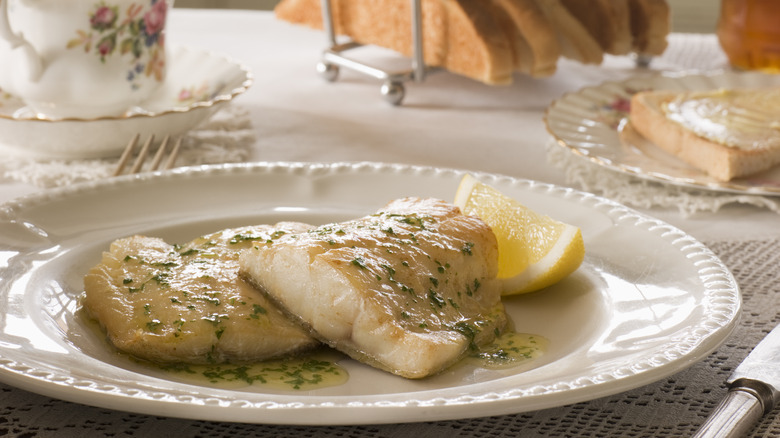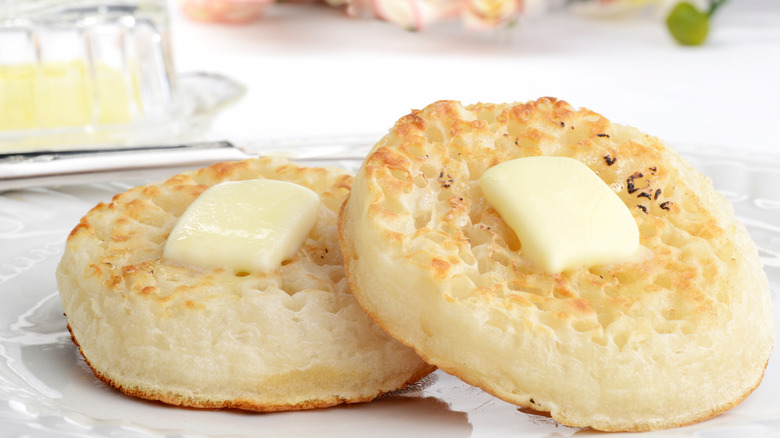What Was Breakfast Like In Victorian England?
From jellied eels to sheep's trotters, the Victorians certainly had interesting tastes. According to So Yummy, other culinary favorites included boiled calf's head, heron pudding, and marrow toast.
But what did Victorians like to dine on for breakfast? There is no simple answer, as what you ate in the morning depended on your wealth or social station. Let's start by looking at what the grande dame herself, Queen Victoria, liked to indulge in.
History Extra describes a typical breakfast for her majesty as eggs on toast, fish, porridge, and other types of bread. 12 Tomatoes suggests that the spread was even bigger, adding bacon, sausage, pork chops, and cold-smoked herring to the list. Why the difference? According to The Spectator, Victoria started eating more after her beloved Prince Albert died, so it's possible that her breakfasts became more elaborate as a result.
The queen also had a fondness for tucking into "finnan haddies" (finnan haddock) in the morning, a Scottish dish cooked via a special process. As outlined by the Slow Food Foundation, you have to salt the fish and then smoke it for eight to nine hours, which gives the fish its well-rounded flavor.
Of course, the queen's style of breakfast wasn't typical — many ordinary people weren't rich enough for that kind of morning feast. So what did other Victorians eat for their first meal of the day?
Victorian breakfasts could be simple or elaborate
As described by BBC News, the poorest in society — those who were forced to live in slums — wouldn't have had ovens. Instead, breakfast might have been bread, as well as broth or "gruel" (according to Delighted Cooking, this "Oliver Twist" dish was a cheap, soupy kind of porridge).
For those who were a little better off, a typical morning meal might have been stone-ground bread covered in lard or dripping (beef fat). Surprisingly, this would have been served with watercress, which was a mainstay of Victorian cuisine as it was cheap and readily available, per Lavender and Lovage.
As for the middle and upper classes, Victorian Children compares their breakfast to the generous spread you might get in hotels nowadays. In other words, a selection of bacon, eggs, haddock, fruits, and bread, all prepared by cooks and servants.
According to Recipe Reminiscing, kedgeree (a dish from colonial India) was also popular, while The Travel mentions that classic English crumpets — served hot and delicious from the skillet — might have shown up too.
When it came to breakfast beverages, My History Fix explains that this would usually have been tea or even beer. But due to the influence of the Temperance Movement, the amber-colored drink became less popular and was replaced with coffee or cocoa.
The decline of the decadent Victorian breakfast
So if you had the means, breakfast was a pretty hefty meal, and that didn't really start to shift until around 1902. According to Encyclopedia, this is when ready-made dried breakfast cereal first appeared in Britain — and interestingly, it was also the year following the death of Victoria in 1901 (via Royal).
It's almost as if the influence of the queen hovered over every British breakfast table until that time, making sure the meal was a suitably elaborate affair. But when she passed away, Force Wheat Flakes hit England.
As described by The Grocer, Force Wheat Flakes — with their "Sunny Jim" mascot — were shipped over from the U.S. and wouldn't reach their peak of popularity in Britain until the 1930s. But they heralded a shift in breakfast habits away from a cavalcade of meats, smoked fish, and pastries to rushed, gulped-down cereal.
And sure, the latter is a lot less hassle, but the former may be more satisfying and leisurely. So maybe we could learn a thing or two from those eccentric Victorians, after all?


